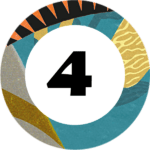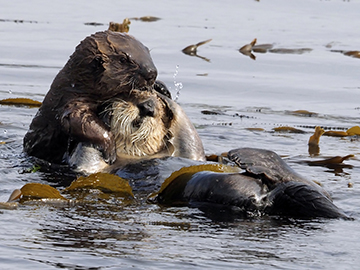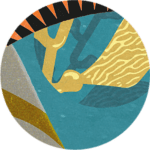
Chapter 4: Genetic and Historical Considerations of Oregon Sea Otters

Oregon’s sea otter population was hunted to extinction during the international fur trade from the mid-1700s to 1910. Although sea otters probably occupied most of the Oregon coast—evidenced by sea otter remains in archaeological sites within Indigenous Peoples’ middens—the historical population size remains unknown. However, studies have used genetics to determine which subspecies (the northern or southern sea otter) aligns best with Oregon’s extinct population. They suggest that Oregon was likely a hybrid zone, with ancestors genetically resembling both subspecies.
The selection of a source population for a new reintroduction to Oregon should include consideration of two factors from a genetic perspective:
- maximization of genetic diversity and
- genetic consistency with the original pre-fur-trade population in Oregon.

Chapter 4
- Historical Considerations
- Genetic Considerations
- Conclusion
Key Quote
“The history of sea otters in western North America—including information from Indigenous oral histories, archaeological remains, and genetic studies—suggests that sea otters in Oregon represented a hybrid zone between southern and northern sea otter populations. Based on this evidence, an argument could be made that any future reintroduction effort would benefit from a design that keeps this history in mind and, thus, aims to recreate such a hybrid zone. This could be achieved in several ways: (1) using both southern and northern source populations for an Oregon reintroduction, (2) using northern sea otters as a source population for a northern Oregon release site and southern sea otters as a source population for a southern Oregon release site, or (3) pairing an Oregon reintroduction that uses a northern sea otter source population with a northern California reintroduction that uses southern sea otters as a source population.”
Key Terms
Click on the following key terms used on this web page to see their definitions on the glossary page:
Learn More
- Chapter 1 – Intro
- Chapter 2 – Prior History
- Chapter 3 – Population impacts
- Chapter 4 – Genetic considerations
- Chapter 5 – Ecosystem effects
- Chapter 6 – Habitat suitability
- Chapter 7 – Socioeconomics
- Chapter 8 – Admin/legal issues
- Chapter 9 – Logistics
- Chapter 10 – Health & welfare
- Chapter 11 – Stakeholder issues
- Chapter 12 – Conclusions
- Appendices: ORSO app, maps


